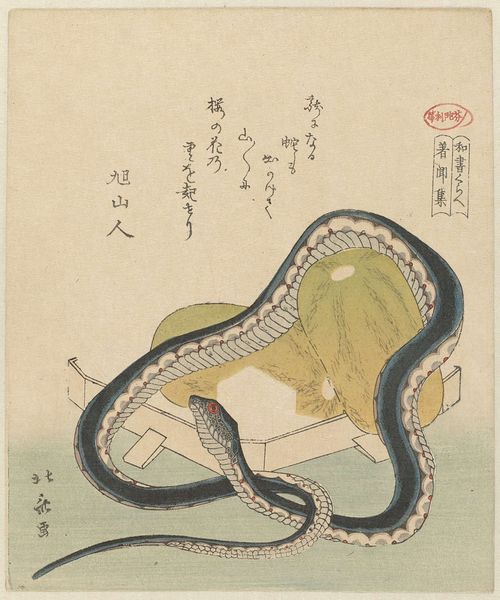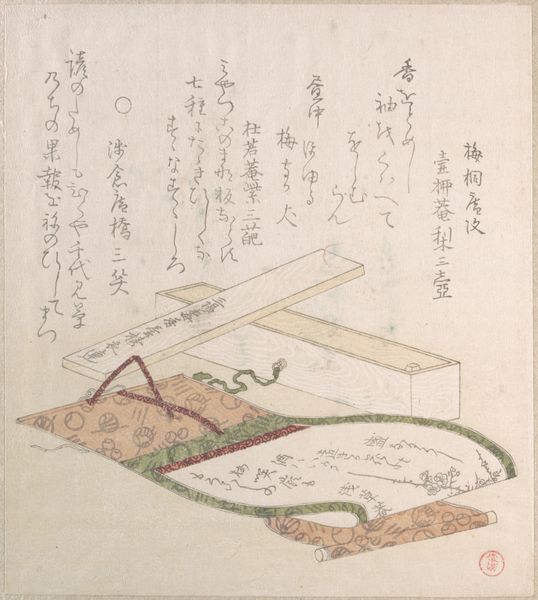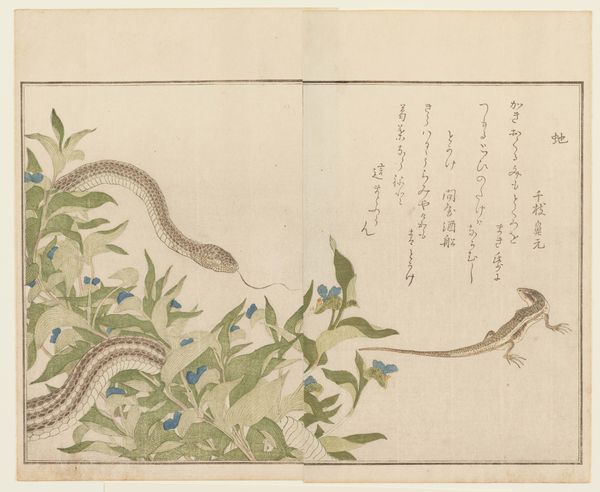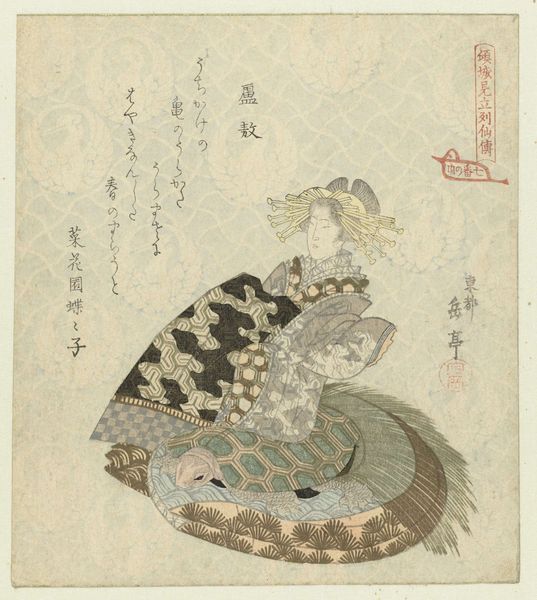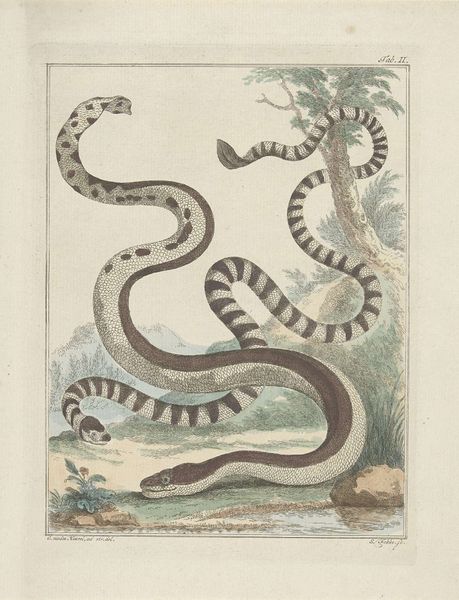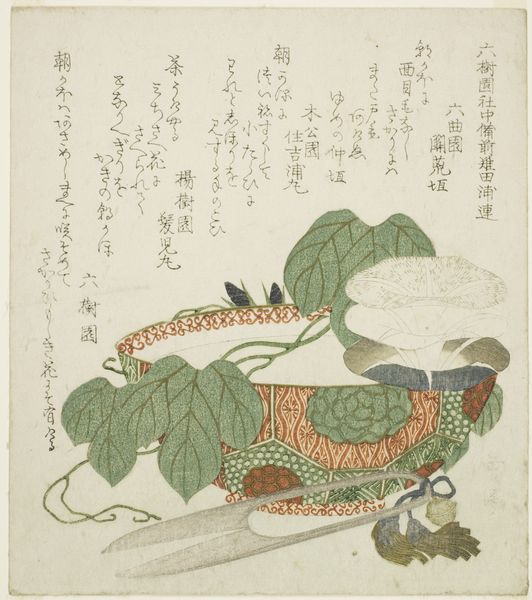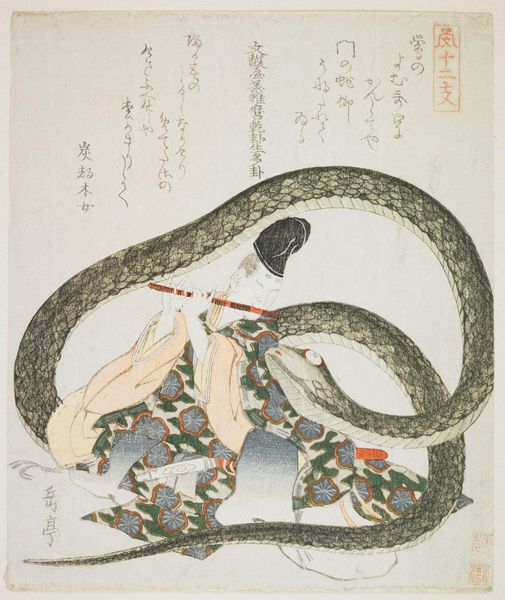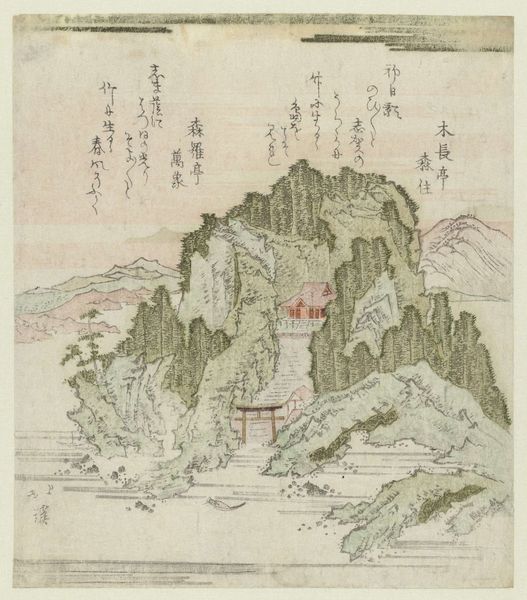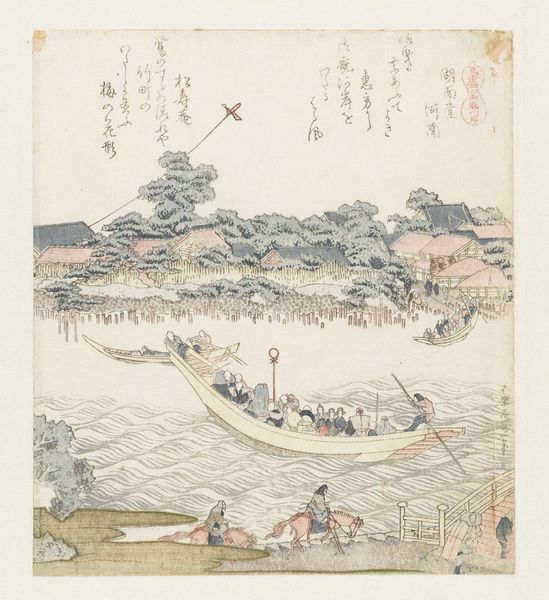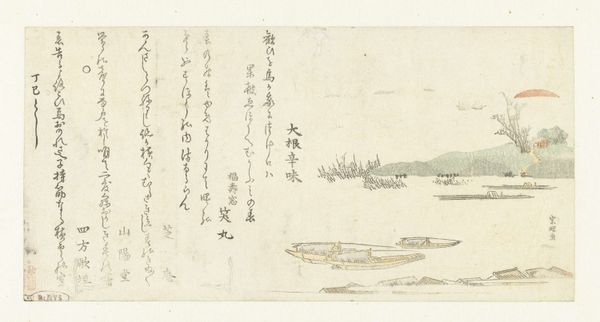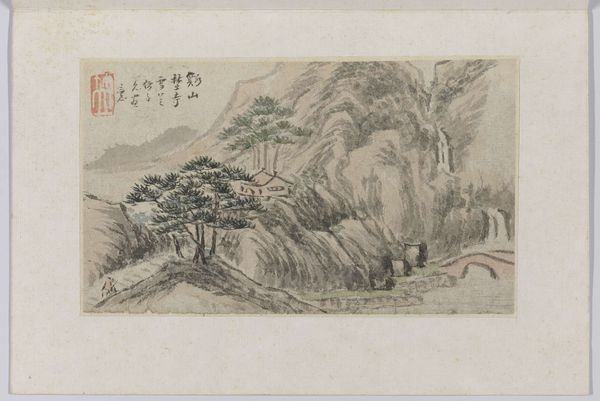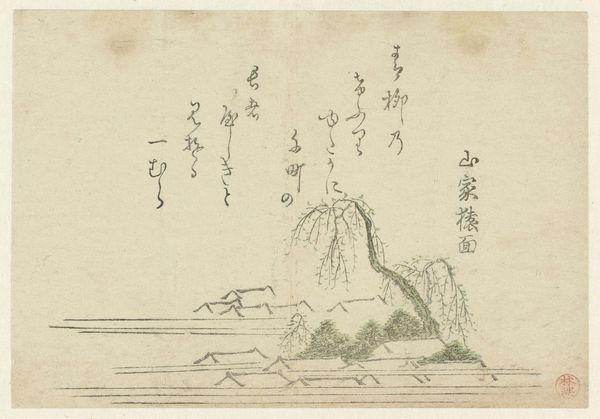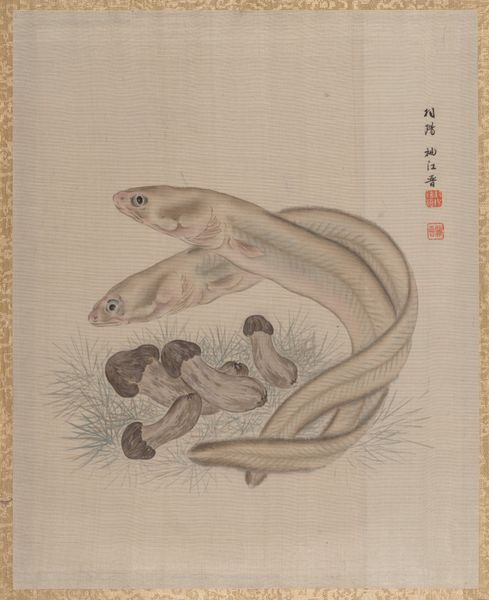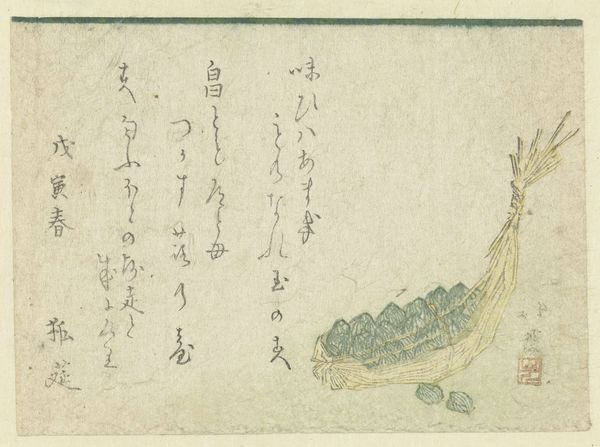
print, woodblock-print
#
portrait
# print
#
asian-art
#
landscape
#
ukiyo-e
#
figuration
#
woodblock-print
#
line
#
watercolour illustration
#
watercolor
Dimensions: height 199 mm, width 184 mm
Copyright: Rijks Museum: Open Domain
Totoya Hokkei created this woodblock print, sometime between 1820 and 1850, which shows a snake curled around a box, on top of which rests what appears to be a large mushroom. Hokkei was a pupil of the great Hokusai, and here we see him working in a style associated with Japanese ‘Surimono’ prints, typically commissioned by poetry societies or for special occasions. Surimono were often privately distributed, rather than sold commercially. The poems inscribed on the print add layers of meaning and connect it to the literary culture of its time. The natural world held deep symbolic and cultural significance in Japan, reflecting Shinto and Buddhist beliefs. Snakes, for example, can represent both danger and healing, while mushrooms are associated with longevity and the mysterious. As art historians, understanding prints like this requires us to look beyond the image itself. We must consider the social networks that commissioned them, the materials and techniques used, and the cultural values they reflect. Only then can we appreciate the rich and complex world of Hokkei's art.
Comments
No comments
Be the first to comment and join the conversation on the ultimate creative platform.
